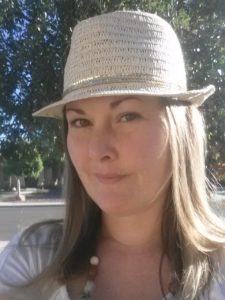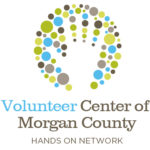 As part of our Mini-Mission Makeover series, more than 30 organizations submitted their Mission Statements for review. Brave souls the lot of them! Sadly, most of them make almost no sense to anyone outside the organization.
As part of our Mini-Mission Makeover series, more than 30 organizations submitted their Mission Statements for review. Brave souls the lot of them! Sadly, most of them make almost no sense to anyone outside the organization.
If you want people to understand your Mission Statement, the first thing you should do is figure out where it lands in terms Reading Ease. There are two super simple tests for this.
- For the Flesch Reading Ease score, the higher the score the better. Time Magazine hovers around 52, whereas the Harvard Business Review is in the low 30’s (cuz those peeps are wicked smaht).
- The Flesch-Kincaid Grade Level score says how many years of education someone needs to understand your Mission Statement. In this case, the lower the score the better. For instance, Dr. Seuss, Master of the Monosyllabic Masterpiece, with an average score of ‘o’, managed to write book for which you need no education to totally get them. (If your’e inclined, you can learn more about both tests here.)
The following organizations submitted their Mission Statements and, sadly, are not just tough to understand but are, in fact, technically incomprehensible, i.e. no matter how many years of education you have, you won’t be able to understand them. #ugh
Sustainable Connections‘ mission is to be the local forum where businesses come together to transform and model an economy built on sustainable practices
West Coast LEAF‘s mission is to achieve equality by changing historic patterns of systemic discrimination against women through BC based equality rights litigation, law reform, and public legal education
The mission of Scottsdale Leadership is to inform, inspire and empower leaders to champion and strengthen the interests of the community.
Pangea Giving For Global Change‘s mission is to inform and engage members in supporting the efforts of grassroots organizations in the developing world to address social, economic, and environmental issues through financial assistance, ongoing partnerships and site visits.
KMFA, Classical 89.5 is a non-profit, listener-supported radio station whose mission is to uplift, entertain and educate Central Texans by providing the best in classical music and cultural programming.
The National Churchill Museum commemorates and celebrates the life, times, and distinguished career of Sir Winston Churchill and inspires current and future leaders by his example of resilience, determination and resolution.
Colorado Alliance for Environmental Education’s mission is to serve all sectors of the Colorado Community by improving the collective effectiveness of environmental education.
How do you fix your Mission Statement if it’s completely incomprehensible?
Although not completely incomprehensibly, the Mission Statement for the Environmental Center at Fort Lewis College is pretty darn low in terms of Reading Ease, as are most nonprofit Mission Statements. Let’s look at their statement as a way of seeing how you might up the readability of your Mission Statement.
AS SUBMITTED: The Environmental Center at Fort Lewis College strengthens student’s commitment to a more socially just, ecologically responsible world by connecting students with the opportunity to create change on campus and in our community. Reading Ease: 5.1, Grade Level: 20.4
FIRST REVISION—taking out some extra words: The Environmental Center at Fort Lewis College connects students with opportunities on campus and in our community to create a more just and ecologically responsible world. Reading Ease: 12.2, Grade Level: 17.7
SECOND REVISION—translating fancy words into plain-speak: The Environmental Center at Fort Lewis College connects students with opportunities to create a more eco-friendly world. Reading Ease: 16.7, Grade Level: 14.6
THIRD REVISION—making it easier to say by rearranging verbs and cutting out syllables: The Environmental Center at Fort Lewis College creates opportunities for students to make our world a more eco-friendly place to live. Reading Ease: 40.4, Grade Level: 12.8
Is “eco-friendly” the same as “socially just and ecologically responsible”? Not exactly. But people get ‘eco-friendly’ so they might—just might—ask a question about the types of eco-friendly opportunities the Environmental Center creates and that will give them a chance to go into greater detail.
For those of you saying, “Not fair–we’re getting dinged for having a big ol’ long name!”
The name of this organization has lots of syllables. This means it will, by definition, not do as well on reading ease tests. Simply by swapping out the name for “we”, you get:
We create opportunities for students to make our world a more eco-friendly place to live. Reading Ease: 61.8, Grade Level: 8.3
61.8 and 8.3? Now we’re cooking with gas! If you have a long name, sometimes it works best to have it be its own sentence, e.g. “I work for the Environmental Center at Fort Lewis College. We create opportunities for students for make our world a more eco-friendly place to live.” Play around with it and see what flows best!
[Check out Kristina Leroux’s fab post on how to use the Flesch Kincaid Reading Ease tools in Microsoft Word on Kivi’s Nonprofit Communications Blog.]
 In 2009, the Institute for Future Workforce Development and the Gerontology Institute merged to become the Civic Service Institute (CSI) at Northern Arizona University. At that point, we adopted this little beauty of a Mission Statement:
In 2009, the Institute for Future Workforce Development and the Gerontology Institute merged to become the Civic Service Institute (CSI) at Northern Arizona University. At that point, we adopted this little beauty of a Mission Statement: Emily Litchfield is the Program Coordinator at CSI. She enjoys playing the Ukulele and is currently studying for the GREs.
Emily Litchfield is the Program Coordinator at CSI. She enjoys playing the Ukulele and is currently studying for the GREs.
 This post is part of our
This post is part of our 
